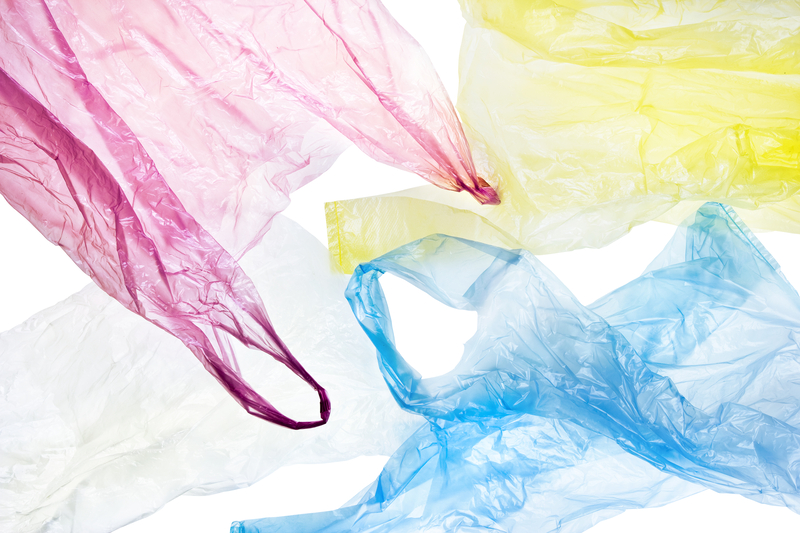Clever Solutions for Managing PPE Waste Responsibly
The widespread use of personal protective equipment (PPE) has been a crucial shield against disease transmission and environmental hazards, especially in recent years. However, the surge in disposable masks, gloves, gowns, face shields, and other PPE products has given rise to a lurking crisis: PPE waste management. The improper disposal of PPE jeopardizes public health, pollutes natural habitats, and undermines sustainability goals. Discover clever solutions and innovative strategies for managing PPE waste responsibly, reducing environmental impact, and promoting a circular economy.
Understanding PPE Waste and Its Global Challenge
Personal protective equipment has become part of daily life for healthcare workers, essential staff, and the general public alike. The management of PPE waste is now a pressing challenge. According to environmental reports, millions of tons of disposable PPE, including masks and gloves, enter the waste stream every year--much of it destined for landfills or lost to the environment. Without clever management solutions, this waste poses hazards to wildlife, marine systems, and human health.
- Increasing PPE usage escalates global plastic and hazardous waste problems.
- Improperly discarded PPE waste can harbor pathogens, creating new public health risks.
- Conventional PPE waste disposal methods, such as incineration and landfilling, have significant environmental drawbacks.
Addressing these challenges starts with understanding the types of PPE waste and exploring innovative ways to handle it responsibly.
Main Types of PPE Waste
- Masks: Single-use surgical masks, respirators, and cloth face coverings.
- Gloves: Nitrile, latex, or vinyl disposable gloves used in healthcare, industry, and public spaces.
- Gowns & Aprons: Protective clothing used by frontline workers and in laboratories.
- Face Shields & Goggles: Plastic-based equipment for full-face and eye protection.

Environmental and Health Impacts: The Cost of Irresponsible PPE Disposal
Mismanaged PPE waste can have severe consequences. Disposable masks and gloves are often made of synthetic plastics that take hundreds of years to decompose. When littered or incompletely processed, these materials break down into microplastics, infiltrating water, soil, and food chains.
- Threat to Wildlife: Animals can ingest or become entangled in discarded PPE, causing injury or death.
- Microplastic Pollution: Tiny fragments of PPE waste infiltrate oceans, rivers, and soils.
- Public Health Hazards: Used PPE can carry infectious agents, posing risks to waste handlers and the community.
The urgency to find clever PPE waste management solutions cannot be overstated. Let's explore effective, responsible approaches to turning this waste into value--or eliminating it at the source.
Practical Solutions for Managing PPE Waste Responsibly
1. Source Reduction and Reusable Alternatives
The most effective way to reduce PPE waste is to minimize its generation. Organizations and individuals can adopt source reduction strategies:
- Opt for reusable PPE: Invest in washable face masks, gowns, and eye protection when appropriate and safe for the setting.
- Educate employees and the public about single-use vs. multi-use PPE and the environmental advantages of reusables.
- Implement strict usage guidelines: Prevent overuse of disposable items by training staff in optimal PPE use and care.
Key benefit: Switching to reusables where possible can drastically cut down on total PPE waste and associated costs.
2. Segregation and Safe Collection of Used PPE
The responsible management of PPE waste starts with effective segregation and designated collection points. PPE waste bins should be clearly labeled and strategically placed in healthcare facilities, businesses, and public spaces. Best practices include:
- Separate PPE waste from recycling and regular trash to prevent contamination and ensure safe downstream handling.
- Encourage double-bagging of medical PPE waste to contain potentially infectious materials.
- Provide clear signage and instructions on what constitutes PPE waste and how it should be disposed of.
These simple but clever steps minimize accidental exposure and enable efficient downstream processing.
3. Specialized PPE Waste Recycling Programs
Innovative recycling programs are emerging to tackle the challenge of PPE waste responsibly. A number of companies and research institutions now offer collection and recycling services for single-use PPE:
- Mechanical recycling: Certain masks, face shields, and gowns can be shredded, cleaned, and repurposed into raw plastic pellets for new products.
- Advanced processes: Innovative techniques such as pyrolysis convert PPE plastics into fuels or other useful chemicals.
- Closed-loop initiatives: Some hospitals and organizations send their PPE waste to specialized facilities, turning waste into building materials, benches, or road surfaces.
Participating in or supporting such programs demonstrates a concrete commitment to sustainable PPE waste management.
4. Biodegradable and Compostable PPE Alternatives
A clever approach to reducing the environmental impact of PPE waste is the development and adoption of biodegradable materials. Recent advancements are making it possible to substitute conventional plastics with eco-friendly options:
- Plant-based masks and gloves crafted from cornstarch, bamboo, or other biodegradable fibers.
- Compostable PPE that breaks down safely in industrial or home composting systems.
- Research into biomaterials that provide required protection while offering easy end-of-life management.
As technology matures and standards are enforced, biodegradable PPE could significantly lessen the pollution caused by disposable equipment.
5. Energy Recovery Through Safe Incineration
When recycling is impossible due to contamination, energy recovery through incineration in modern waste-to-energy plants can be a responsible option. High-temperature incinerators with emissions controls can safely destroy pathogens and convert waste into electricity or heat. However:
- Proper control measures are essential to prevent the release of harmful substances.
- Not all incinerators are suitable--medical waste facilities must meet strict regulatory standards.
Energy recovery offers a practical disposal route for certain high-risk PPE wastes, especially in healthcare settings.
Embracing Technology and Data for Better PPE Waste Control
Technology-driven solutions are revolutionizing PPE waste management. From smart bins and blockchain monitoring to AI-driven logistical analysis, new tech offers greater transparency, efficiency, and accountability:
- Smart collection systems: IoT-enabled bins track fill levels and optimize waste removal schedules, reducing overflow and exposure.
- Barcode and RFID tracking: Helps monitor PPE waste streams and ensures chain-of-custody for hazardous materials.
- Data analytics: Analyzes PPE usage patterns to inform procurement, reduce waste, and optimize disposal processes.
Organizations that embrace these clever technological solutions are often able to realize substantial cost savings and compliance improvements while also enhancing environmental stewardship.
Engaging Communities and Raising Awareness about PPE Waste Solutions
Intellectual solutions for responsible PPE waste management depend not only on infrastructure, policy, and technology, but also on public participation.
- Education campaigns are crucial for informing citizens on how to dispose of PPE responsibly.
- Community collection drives encourage the safe return of used masks and gloves for proper processing.
- Industry partnerships and volunteer programs can boost local recycling or upcycling initiatives.
Increased awareness leads to behavioral change--turning the tide on the pervasive issue of PPE litter and environmental contamination.
Government Regulations and Corporate Responsibility in PPE Waste Management
Regulatory bodies play a vital role in ensuring the responsible management of PPE waste. Governments worldwide are issuing guidelines for the safe disposal, transport, and recycling of used PPE. Some clever examples include:
- Mandatory segregation of PPE in public places and medical facilities
- Regulations on labeling, color-coding, and handling PPE waste
- Incentives for companies implementing recycling programs or using biodegradable PPE products
Corporate and institutional responsibility is equally important. By adopting comprehensive waste management policies, companies can ensure PPE waste is accounted for and processed safely. Certifications, such as ISO standards for environmental management, underline a proactive, ethical approach to sustainability.
Real-World Case Studies: Successful PPE Waste Management Strategies
Case Study 1: Hospital-Based PPE Recycling
A large hospital in Europe collaborated with a recycling company to collect single-use masks and gowns used across its departments. These were shredded, sterilized, and reprocessed into plastic pellets, which were then used to manufacture outdoor furniture for the hospital grounds. This closed-loop system not only diverted tons of PPE waste from landfill, but also showcased the tangible benefits of clever PPE waste recycling solutions.
Case Study 2: Municipal Mask Collection Programs
Several cities have installed special mask-collection bins at transport hubs and busy centers. Masks are collected under hygienic protocols and sent to specialized plants for either recycling or safe disposal. Educational campaigns informing citizens of these options have led to measurable decreases in PPE litter on streets and in waterways.
Case Study 3: Manufacturing Compostable PPE
A startup in Asia developed biodegradable face masks made from bamboo fiber, offering adequate filtration and comfort. Bulk contracts with schools and public facilities reduced their reliance on plastic-based disposable masks. Field trials demonstrated rapid composting in municipal organic waste systems, reducing persistent waste.

The Future of Clever PPE Waste Management
As technology advances, regulations strengthen, and public awareness grows, the landscape of PPE waste management is set for transformation. Emerging trends include:
- Expansion of PPE upcycling and closed-loop recycling programs
- Wider availability of certified compostable and biodegradable PPE
- Automated sorting and decontamination systems to improve the safety and efficiency of waste handling
- International standards for sustainable PPE production and disposal
The days of "use and discard" are numbered, thanks to clever solutions, cross-sector collaboration, and the shared vision of a cleaner, safer planet.
Conclusion: Taking Action for Responsible PPE Waste Management
The surge in PPE usage has been a double-edged sword--crucial for safety, but catastrophic for the environment when mismanaged. Fortunately, innovative PPE waste management strategies are within reach. By embracing reusable alternatives, supporting specialized recycling, switching to biodegradable products, and leveraging data-driven insights, individuals and organizations can make a real difference.
Everyone has a role to play--from policymakers to business leaders to everyday citizens. Let us champion clever, responsible solutions for PPE waste, protecting public health and the planet for generations to come.
Key Tips for Managing PPE Waste Responsibly
- Choose reusable PPE whenever possible.
- Segregate and safely collect all used PPE materials.
- Participate in PPE recycling and upcycling initiatives.
- Stay informed about local regulations and disposal guidelines.
- Raise awareness in your community about responsible PPE waste solutions.
By implementing these clever solutions, we can collectively reduce pollution, support a circular economy, and secure a healthier future.